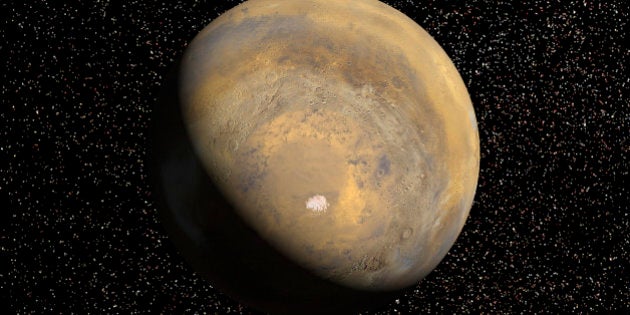
It's a little over a week until this year's Autumnal Equinox, the day that marks the familiar transition from summer to fall. The equinoxes -- equal nights -- are the two days each year when the day and night are each 12 hours, the same duration everywhere on the planet. Here in northern climes, they mark the descent into the ever-longer nights of winter; south of the equator, they're entering the long days of summer.
All the way south, a few dozen ragged souls are living at the Amundsen-Scott South Pole Station, awaiting the return of light. They've been trapped there since February, keeping the place running through six-month night. Next weekend, they'll celebrate Sunrise, the beginning of a long return to normality. It'll be a few more weeks before planes and supplies can make it in to relieve them, but the return of sunlight is a huge milestone in the career of an Antarctic Winterover.
A few years ago, I was one of them, confused and overwhelmed by the sudden arrival of sunlight. I spent 11 months at the pole that year, operating and maintaining the 10m South Pole Telescope (SPT) through the frigid and desiccating winter. The SPT was built there because of the spectacularly clear view it offers of the oldest light in the Universe, light left over from an earlier time, from a very different Universe, almost 14-billion years ago.
I'm a cosmologist by trade, I study the universe on the largest scales, to try and understand what, exactly, is going on out there. The astonishing triumph of the last 20 years is that we have much of the puzzle in place: we know what's out there, how it got here; we have coherent models of what it does, and why it does it.
Can I tell you what that first spark was, the thing that initiated it all? No, not yet. We may never know all the answers, but day-by-day the curtain is being pulled back. I can tell you the elements which make up the earth and everything on it were forged in the heart of a dying star, a star that grew in a younger Milky Way galaxy, which coalesced along with other nearby galaxies out of a vast web of material running through the cosmos, a web that formed from pressure waves passing through a nascent universe. It's a remarkable story, but one we're confident of, one we've seen through decades of devoted observations.
Observations like those underway deep in the Antarctic interior, by SPT and other dedicated telescopes. There are no doubt gaps to be filled, assumptions to be checked, mistakes to be corrected, but thanks to humanity's unending curiosity and willingness to push their own limits, we know the broad strokes of how we came to be here. Staring into the depths of the celestial abyss and accepting our meagre role in an obscure corner of reality is by no means easy or comforting. Neither is building massive telescopes on the bottom of the planet and leaving people to run them in -100C windchills. But these things enrich us beyond ease or comfort, they help us understand our place, what impact we do have, and what spectacular beauty life holds.
Many among my friends, colleagues, and family bemoan the end of summer, the coming nights of winter. I've come to appreciate the cold and the dark, knowing that at the other end, there's a spring waiting to come out.
To those lonely polies keeping things running: Happy Sunrise!